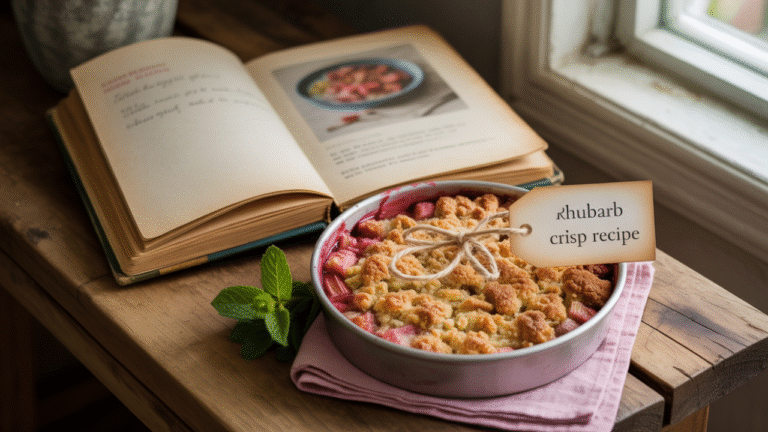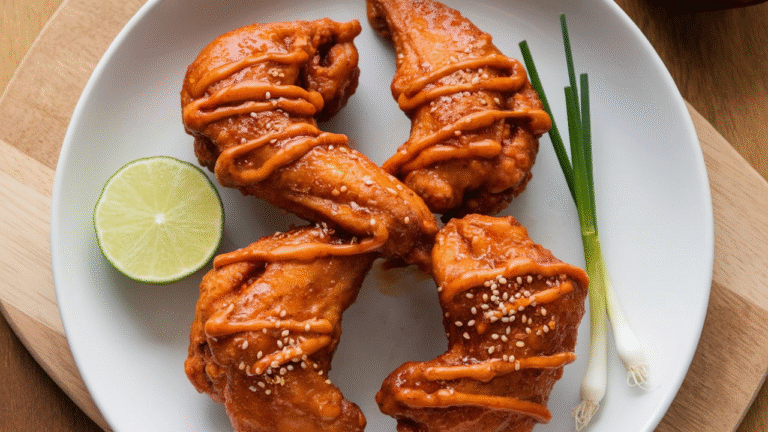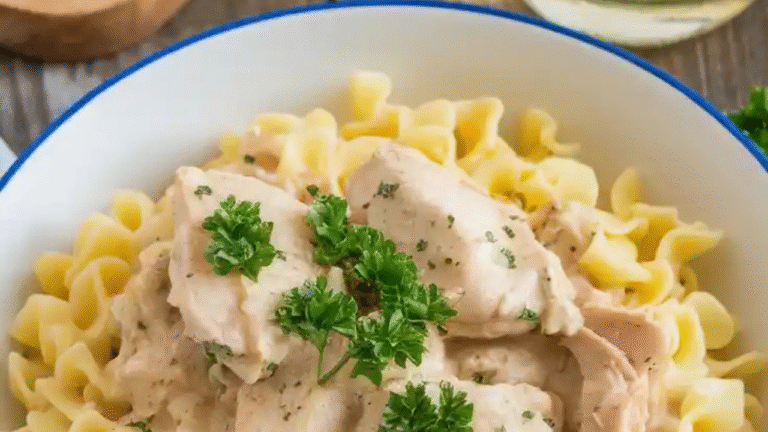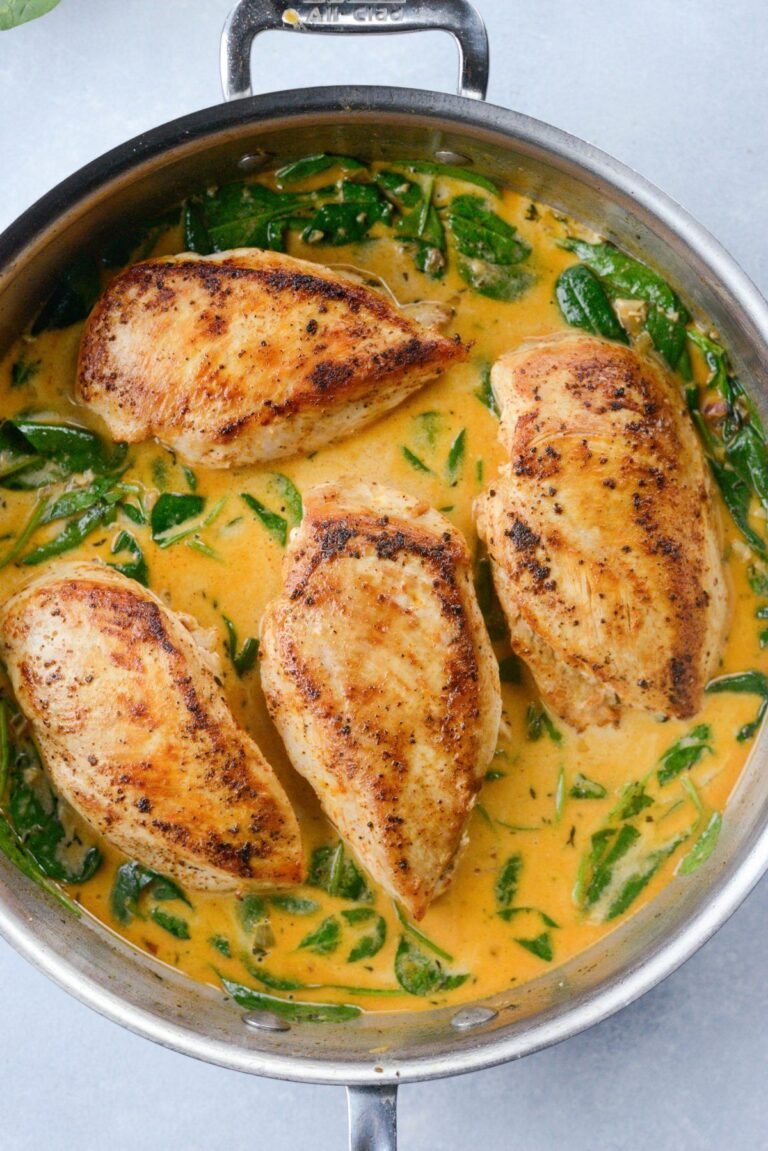Cooking butterflied quail with an orange glaze is one of those culinary experiences that sits right at the intersection of elegance and simplicity. This is not a fussy dish for food snobs—it’s a straightforward, flavor-loaded recipe that anyone with basic kitchen skills can pull off. In just under an hour, you can turn a small bird into a restaurant-worthy plate with a tangy-sweet citrus punch.
This guide will walk you through every step—from selecting quail to serving it on a plate that could make a food critic nod in approval. By the end, you’ll not only know how to cook this dish but also understand why each step matters for achieving the perfect taste and texture.
Understanding Quail and Why It Works with Orange
Quail is a small game bird that’s lean yet rich in flavor. It has a taste similar to chicken but with a slightly more gamey, earthy depth. This is why pairing it with something bright and acidic—like fresh orange juice—creates balance.
- Quail Size: Each bird typically weighs between 4 to 6 ounces.
- Cooking Time: Because of its size, it cooks quickly—often in under 20 minutes after prep.
- Meat Texture: Quail has tender meat that benefits from high-heat cooking to crisp up the skin without drying the inside.
The sweetness from the orange cuts through the richness of the meat, while the citrus acidity enhances its savory notes. The aroma of roasted quail with caramelized orange glaze is enough to pull people into the kitchen before you even call them to the table.
Choosing and Preparing Your Quail
The first step to great quail is buying the right bird. Fresh is always better, but frozen can still deliver excellent results if thawed properly.
What to look for when buying quail:
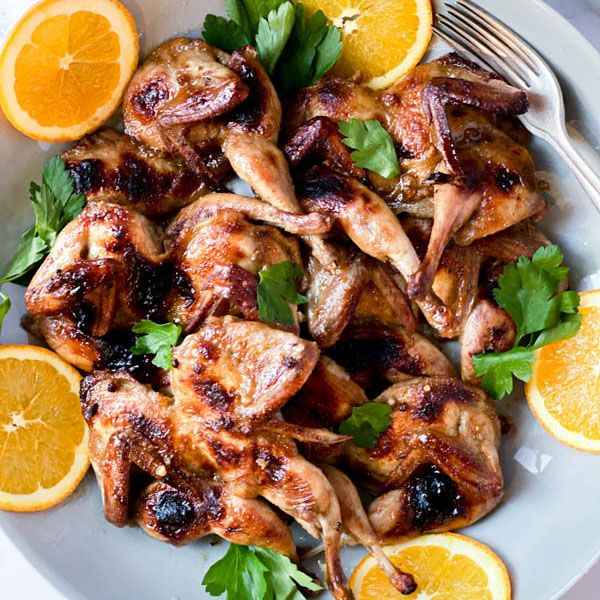
- Freshness: The skin should be pale, clean, and without bruises.
- Size: For an even cook, try to get birds of similar size.
- Source: If possible, choose quail from a trusted butcher or specialty poultry supplier.
Thawing frozen quail:
- Thaw in the refrigerator for 12-24 hours.
- Avoid thawing on the counter—this risks bacterial growth.
The Butterflying Process (Spatchcocking)
Butterflying means removing the backbone so the bird can be laid flat for even cooking. This step is crucial for two reasons:
- It allows the quail to cook evenly without overcooking the legs or undercooking the breast.
- It maximizes skin exposure to heat, giving you a crispy, golden-brown finish.
Steps to butterfly a quail:
- Place the bird breast-side down on a cutting board.
- Use sharp kitchen shears to cut along both sides of the backbone.
- Remove the backbone completely.
- Flip the bird over and press down on the breastbone to flatten it.
Personal note: The first time I butterflied a quail, I used a dull knife—big mistake. It shredded the skin, and presentation went downhill fast. Invest in good shears; they make the job clean and quick.
The Orange Factor – More Than Just Juice
When we say “orange” in this recipe, we’re talking about three parts of the fruit:
- Zest: Brings concentrated citrus aroma without adding moisture.
- Juice: Adds sweetness and acidity for balance.
- Segments: Provide bursts of fresh, juicy flavor when served.
Why orange works so well with quail:
- The natural sugars in orange caramelize beautifully under heat.
- Its acidity tenderizes meat slightly.
- The bright flavor counteracts the richness of game birds.
Ingredients List (Serves 4)
For the quail:
- 4 whole quail, butterflied
- 2 tablespoons olive oil
- 1 teaspoon salt
- ½ teaspoon black pepper
- 1 teaspoon smoked paprika
- 1 teaspoon garlic powder
For the orange glaze:
- Zest of 1 large orange
- Juice of 2 large oranges (about ¾ cup)
- 2 tablespoons honey
- 1 tablespoon soy sauce
- 1 teaspoon Dijon mustard
- 1 teaspoon fresh thyme leaves
For garnish (optional but worth it):
- Fresh orange segments
- Extra thyme sprigs
Marinating for Maximum Flavor
A good marinade is the difference between “this is nice” and “I need seconds.” Quail’s small size means it doesn’t need hours to soak—30 minutes to 2 hours is enough.
Marinade tip: Combine half of your orange juice, honey, olive oil, paprika, garlic powder, and thyme. Coat the quail thoroughly, cover, and refrigerate.
Why short marination works: Because quail is lean and small, extended marination can actually break down the meat too much, resulting in a mushy texture. A short soak infuses flavor without compromising texture.
Cooking Methods – Pick Your Weapon
There are several ways to cook butterflied quail, but for orange-glazed perfection, these two are the best:
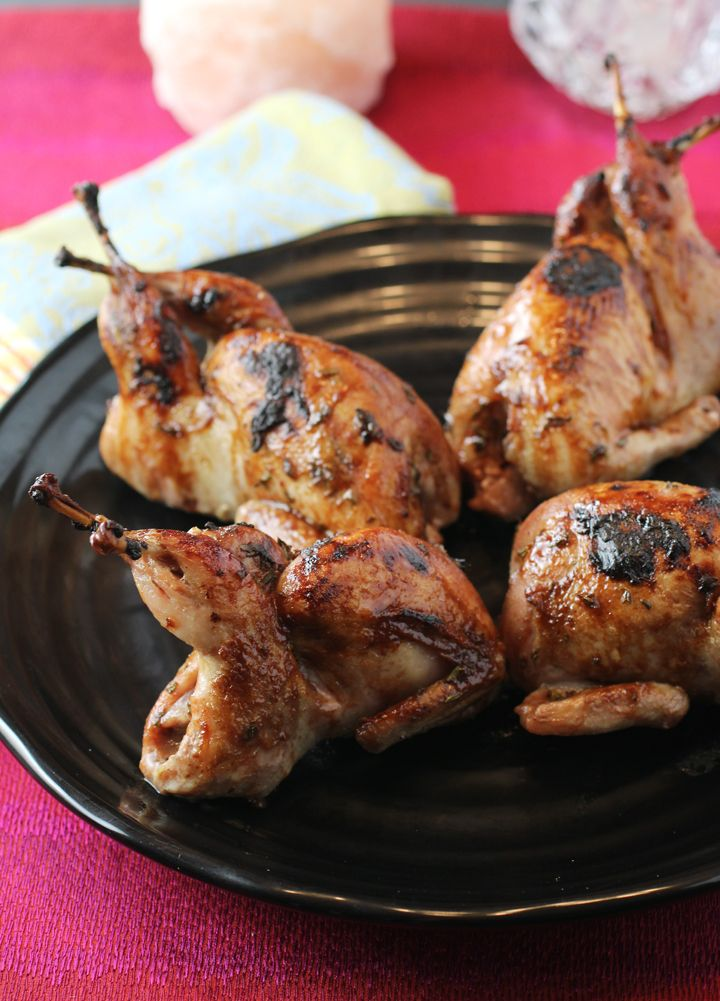
1. Oven-Roasting
- Temperature: 425°F (220°C)
- Time: 15–18 minutes
- Roast skin-side up for maximum crispness.
- Brush with orange glaze in the last 5 minutes for caramelization.
2. Grill Cooking
- Heat: Medium-high
- Time: About 6–8 minutes per side
- Grill marks plus orange glaze = flavor and presentation win.
Pro tip: If you’re using a glaze with sugar (like honey and orange juice), apply it during the last third of cooking time to avoid burning.
Making the Orange Glaze
The glaze is where sweet, savory, and tangy come together.
Steps:
- In a small saucepan, combine orange juice, zest, honey, soy sauce, mustard, and thyme.
- Bring to a gentle simmer.
- Cook until reduced by half—this should take 6–8 minutes.
- The glaze should coat the back of a spoon when ready.
Why reduction matters: Reducing intensifies flavor and thickens the glaze so it clings to the bird instead of running off.
Step-by-Step Cooking Process
- Preheat oven or grill.
- Prepare quail: Pat dry after marinating to ensure crisp skin.
- Season lightly: Even with marinade, a pinch of salt before cooking boosts flavor.
- Cook using chosen method: Keep an eye on time—overcooking dries quail quickly.
- Apply glaze: In the last 5 minutes, brush generously.
- Rest before serving: Let quail rest for 5 minutes so juices redistribute.
Serving and Presentation
For a restaurant-style plate:
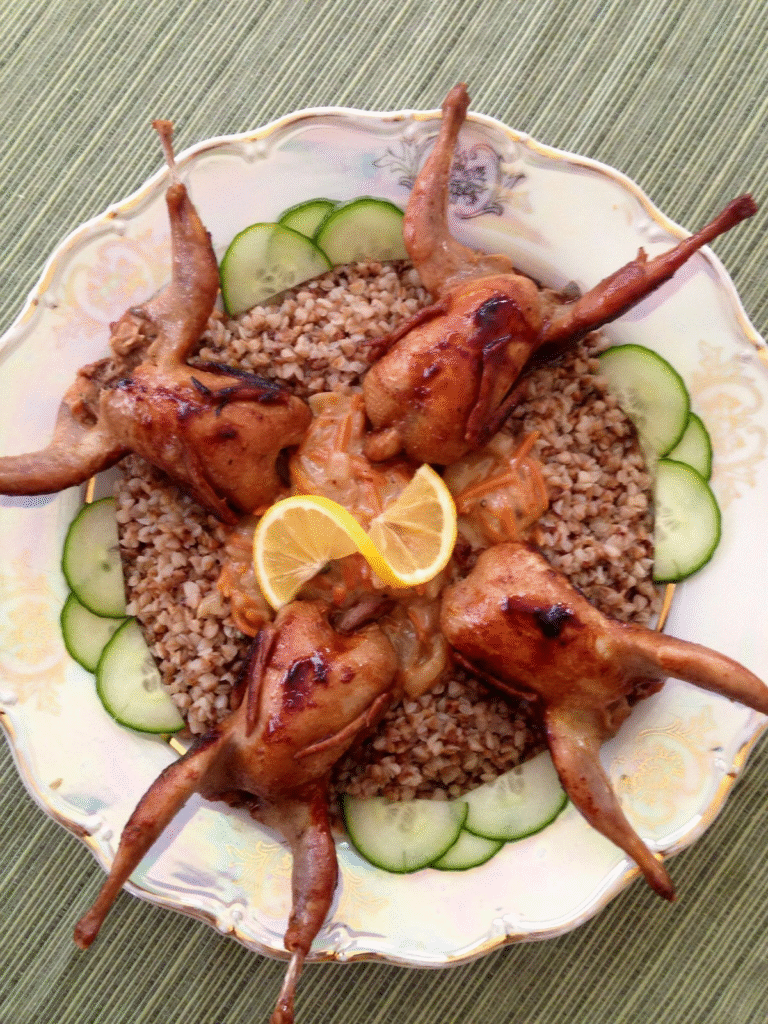
- Arrange two quail halves per person.
- Drizzle extra glaze over the top.
- Add fresh orange segments and thyme for contrast.
- Serve with wild rice, roasted vegetables, or a light citrus salad.
Storage and Reheating Tips
Refrigeration: Store leftovers in an airtight container for up to 2 days.
Freezing: Not ideal, as quail can dry out, but possible if wrapped tightly.
Reheating: Use a low oven (300°F) covered with foil to keep moisture in—about 10 minutes.
Nutritional Information (Per Serving)
- Calories: 280
- Protein: 22g
- Fat: 12g
- Carbs: 14g
- Sugar: 10g
These values will vary slightly depending on the glaze’s sweetness and portion sizes.
Common Mistakes to Avoid
- Overcooking: Quail goes from perfect to dry in just a minute too long.
- Too much glaze too soon: Sugar burns fast—apply near the end.
- Skipping the rest: Cutting into the bird too early loses precious juices.
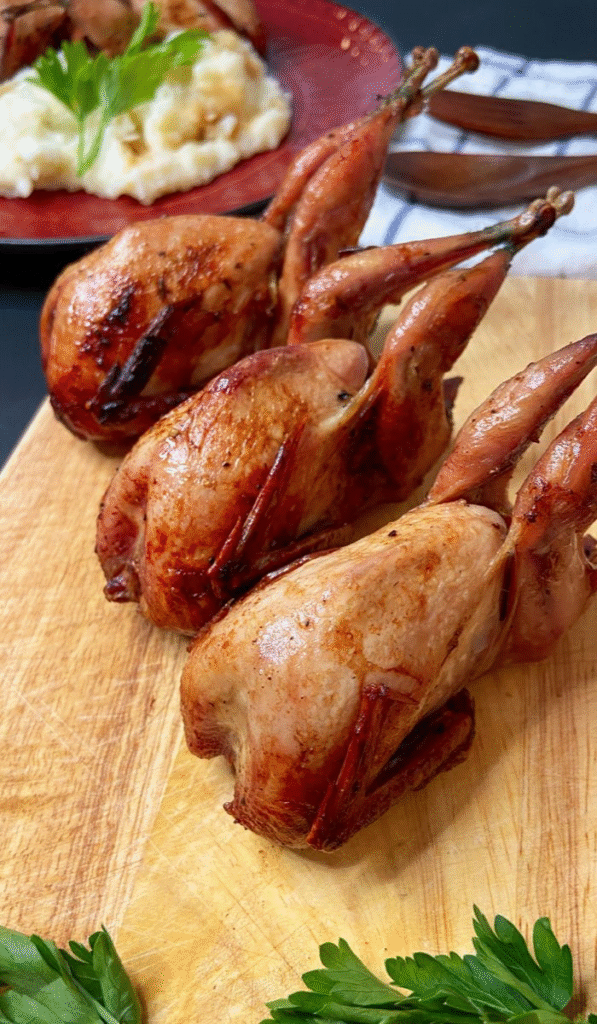
Final Thoughts
Making butterflied quail with orange isn’t just about following a recipe—it’s about understanding why each step makes the dish better. The butterflying ensures even cooking, the orange brings balance, and the short cooking time keeps the meat tender.
Once you’ve mastered this, you can experiment—try adding chili flakes for heat, swap orange for blood orange, or even use a pomegranate glaze for a twist. This is the kind of dish that makes dinner guests think you have culinary training, even if you just learned how to butterfly a bird this morning.



